How to Hide TV Wires: A Complete Guide to Concealing Cables
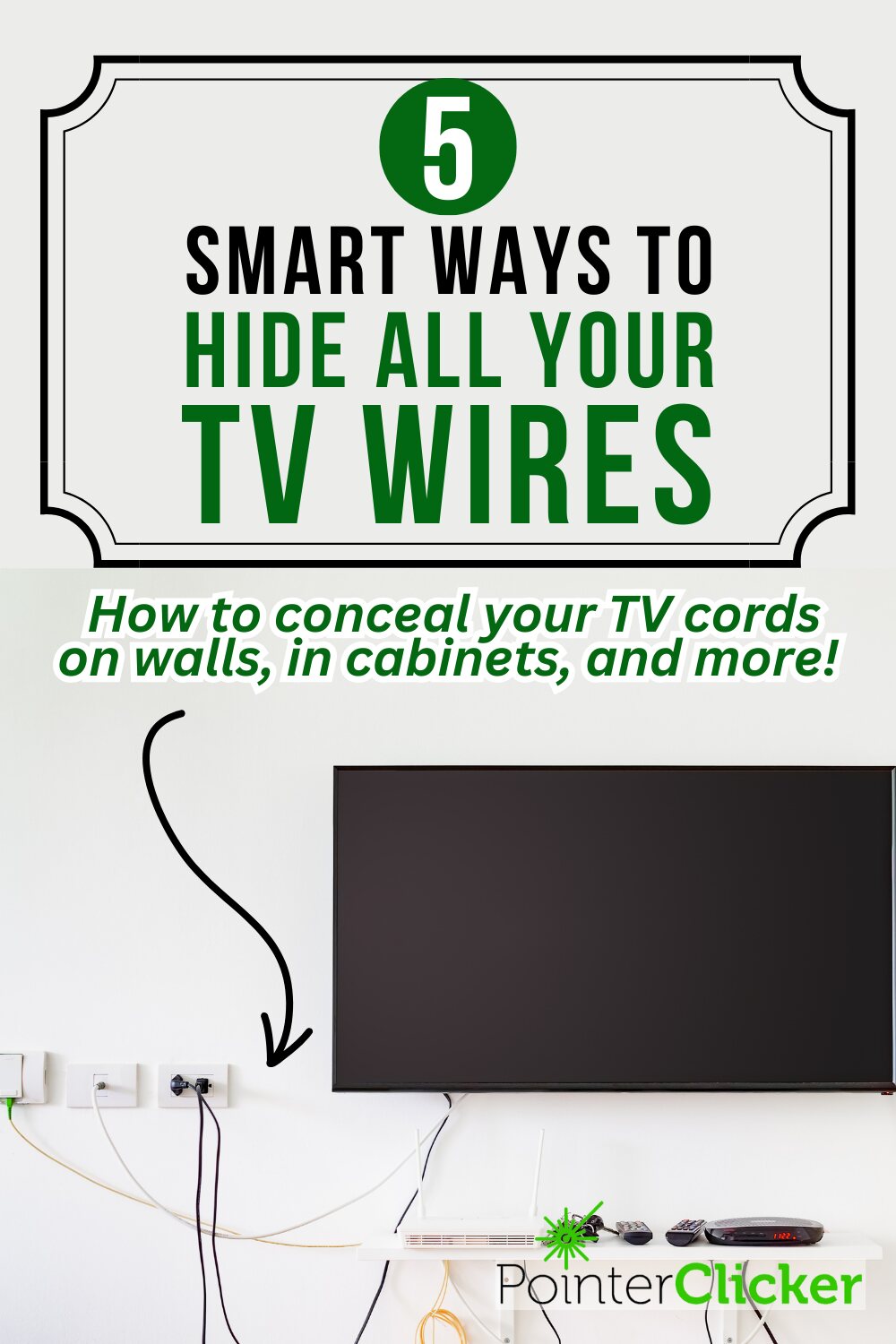
Are you tired of the mess of cables ruining the look of your beautiful wall-mounted TV?
In this guide, I’ll show you how to hide TV wires without making any holes, making it perfect for rentals. Whether your TV is above the fireplace, in the living room, or the bedroom, I’ve got you covered with easy DIY solutions.
You can achieve a clean, clutter-free look by using these useful life hacks to hide TV cords, even if your TV is mounted on the wall.
Let’s make your space look tidy and stylish with these simple steps.
Quick Navigation
Safety Considerations
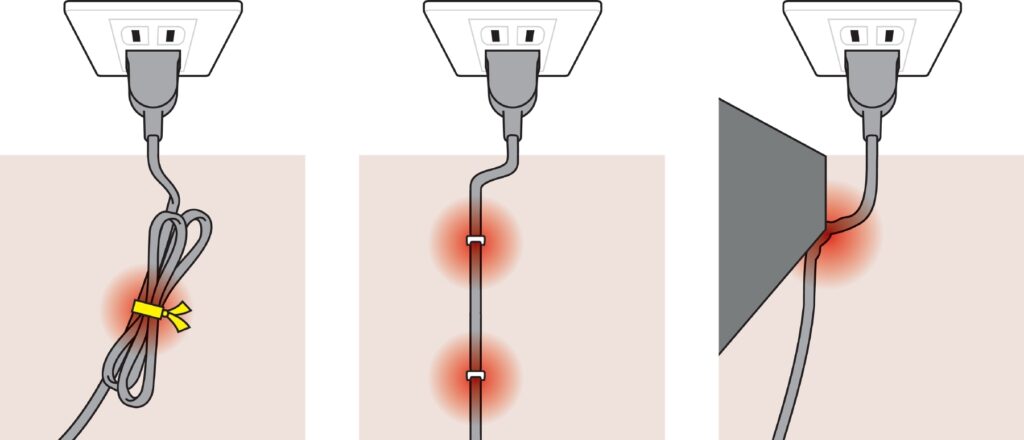
Before we explore the different ways to hide TV wires, it’s important to consider safety precautions.
When dealing with electrical wiring, it’s crucial to follow proper guidelines and ensure compliance with building codes. Here are some important safety factors you should consider:
Surface-mount channels and raceways: These solutions are not designed for concealing a household’s current building wiring. Instead, it is recommended to install plastic-sheathed NM or metal-sheathed BX wiring within walls to ensure proper protection.
- For installations requiring individual strand THHN wires, rigid metal conduits should be used.
- It is important to note that THHN, NM, and BX wiring should not be installed in exposed locations.
Power supply cords: If your TV or other electronic devices have power supply cords that are permanently attached, you can usually install them in surface-mount channels and raceways. However, it’s important to always check the safety instructions of the device before you do that.
Low voltage cables: You can route Ethernet cords, data cables, speaker wires, coaxial cables, HDMI cables, and other low or non-voltage wires through channels and raceways, or leave them exposed.
Note: The safety guidelines provided above are solely for informational purposes. It is strongly advised to consult a professional electrician to ensure compliance with local regulations and to address any specific safety concerns you may have.
How to Hide TV Wires
Now that we understand the safety considerations involved, let’s explore some practical solutions to achieve a clean and organized look for your entertainment area.

1. Hide Within the Wall
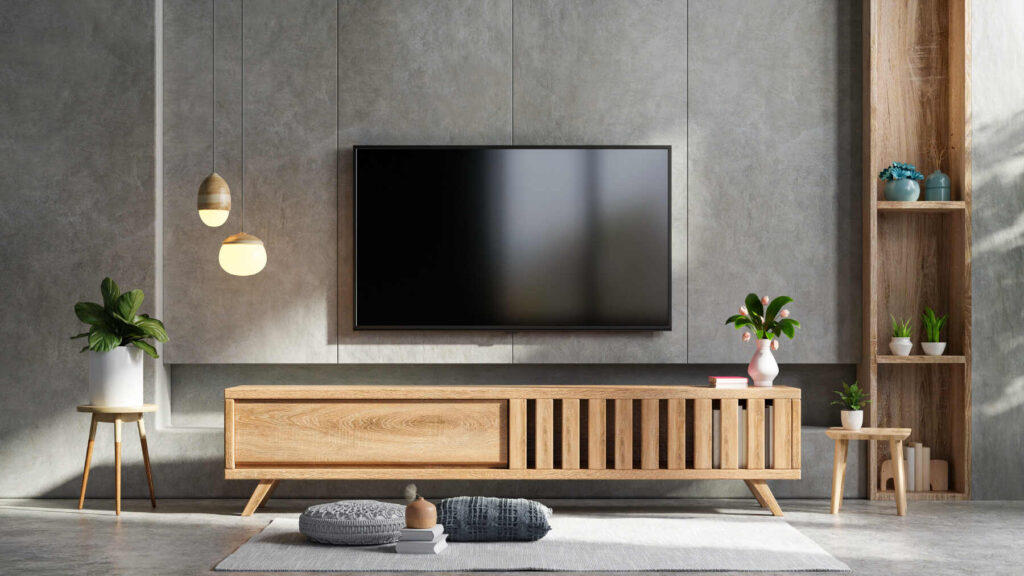
One of the most effective methods of hiding TV cords is to conceal them behind drywall.
While this method requires some effort, it provides a seamless and clutter-free appearance.
Here’s a detailed guide on how to hide TV wires within the drywall:
1. Prepare the wall: Use a hole saw to mark and cut two holes in the wall. To make wire management easier, place one hole near the bottom of the wall where the TV is mounted, and another hole close to the power outlet below.
2. Install low voltage brackets or boxes: Before running the wires, install low voltage brackets or boxes in the wall to provide secure housing for the cables.
3. Route the wires: To ensure proper cord connection at the entrance and exit points, securely run the wires from the top hole to the bottom hole within the brackets or boxes.
4. Cover and conceal: Once the wires are in place, cover the holes with wall plates or cable plates to create a blank canvas between the bottom of the TV and the top of the console or cabinet below.
Note: If you’re unsure about cutting into your walls, or if you have a different wall material or are renting, it’s advisable to consult a professional electrician or technician for in-wall cable concealment.
2. Cover with a Cable Raceway
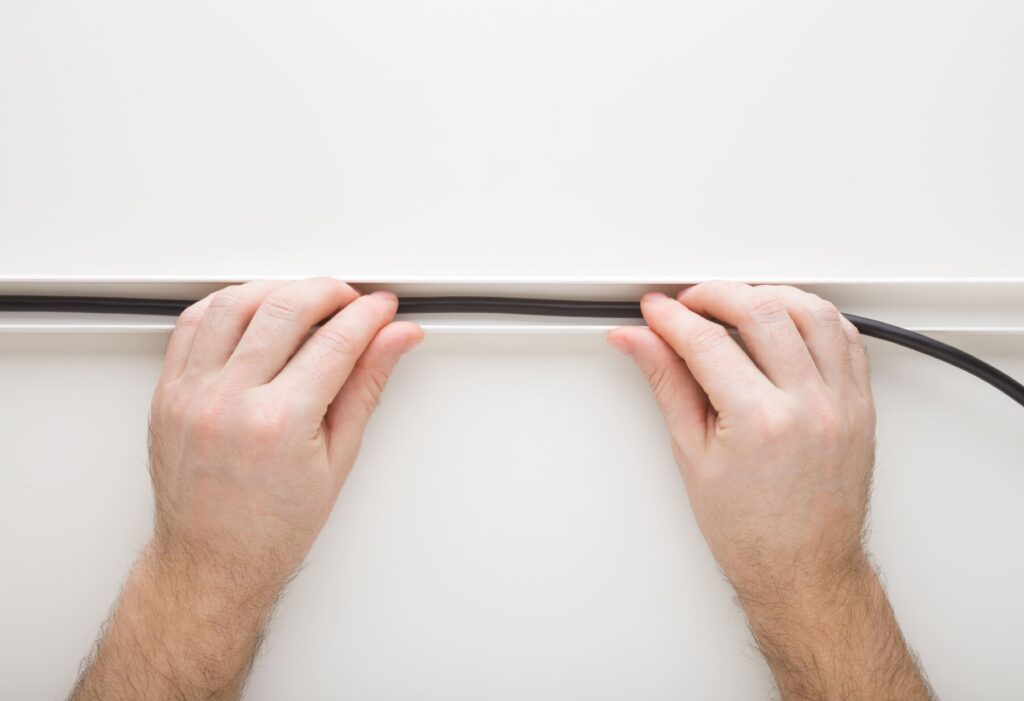
If cutting into the wall is not an option, or if you prefer a simpler solution, a cable raceway is an excellent alternative for hiding TV wires.
A cable raceway is a flat PVC cover that can be directly attached to the wall, providing a smooth surface to manage wires without the need for extra drilling.
Here’s how to use a cable raceway to conceal cords:
1. Choose the right raceway: Select a cable concealer kit or raceway that suits your needs. These kits typically include adhesive backs for easy installation.
2. Prepare the cords: Bundle the cords together, ensuring they are organized and free from tangles.
3. Cut and install the raceway: Measure the required length of the raceway and cut it accordingly. Follow the manufacturer’s instructions to attach the raceway securely to the wall.
4. Snap the cover on top: Once the raceway is in place, snap the cover on top, concealing the cords within.
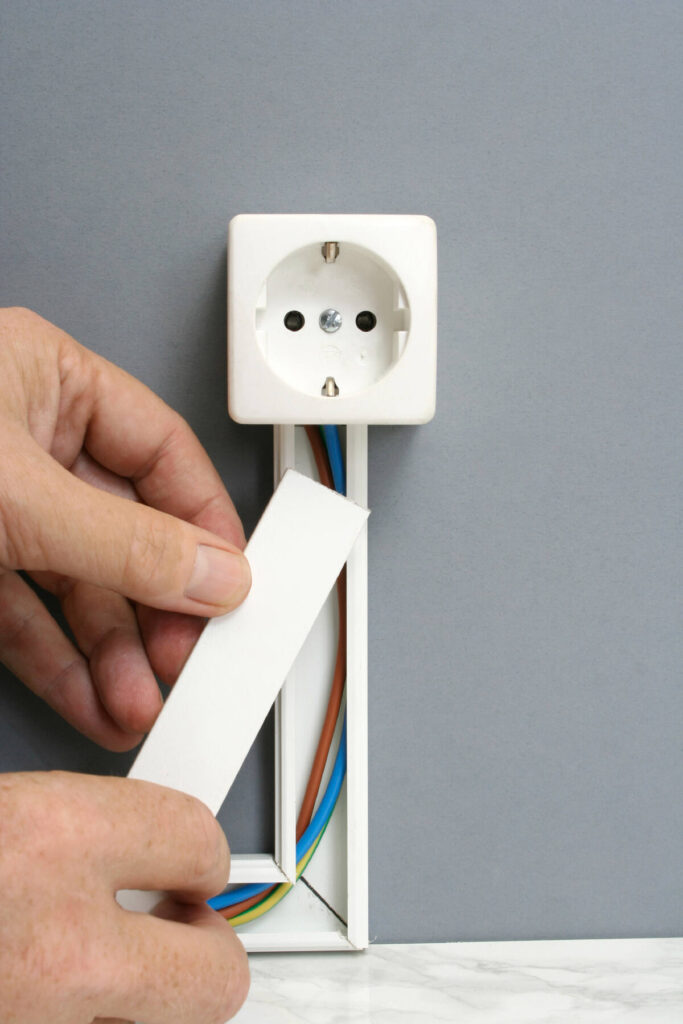
For a seamless look, you can paint over the raceway using the exact color of your walls.
3. Choose a TV Stand with an Outlet
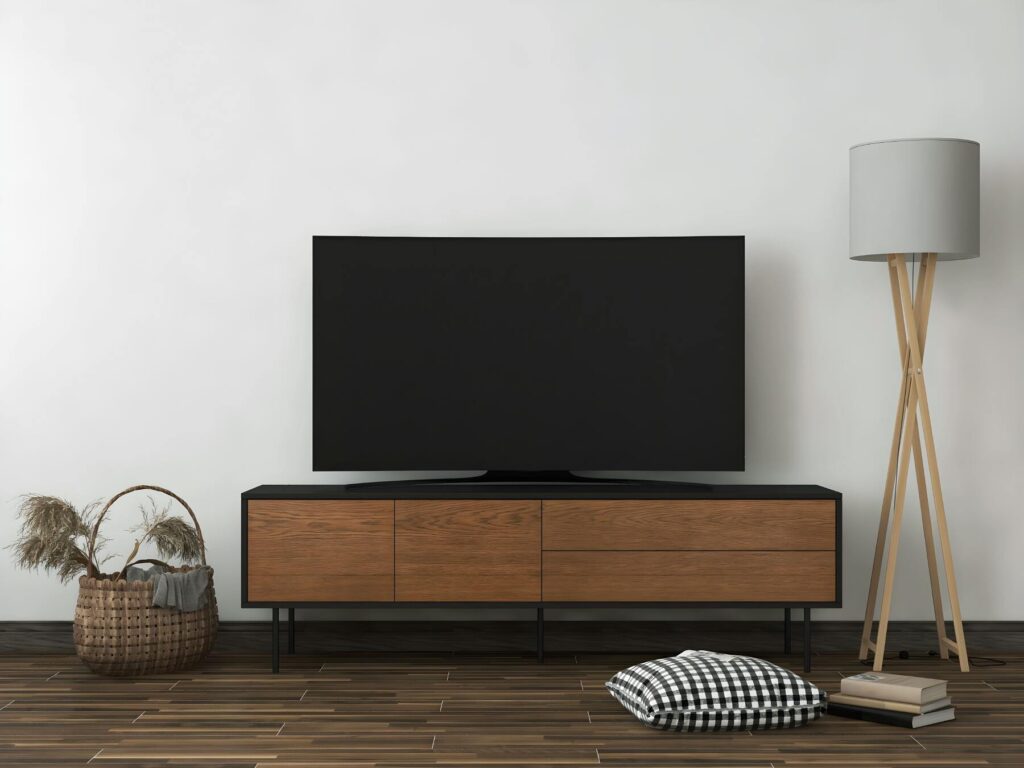
If wall mounting is not an option or if you prefer the flexibility of placing your TV on a stand, choosing a TV stand with an outlet can help you achieve a cleaner look.
Here’s how to utilize a TV stand to hide cords:
1. Select the right TV stand: Choose a TV stand that has a console, cabinet, or entertainment center with a dedicated opening at the back made for managing cords.
2. Organize the cords: Bundle the cords together and use clips or adhesive hooks to keep them in place.
3. Route the cords: Feed the bundled cords through the opening at the back of the TV stand, ensuring they are neatly tucked away.
4. Hide additional devices: If you have a cable box or router, place them behind a cabinet door within the TV stand to further reduce visual clutter and keep the cords out of sight. Bear in mind that if your cable box uses an IR remote, it may be unable to receive its remote’s commands if concealed.
4. Use a Cable Box
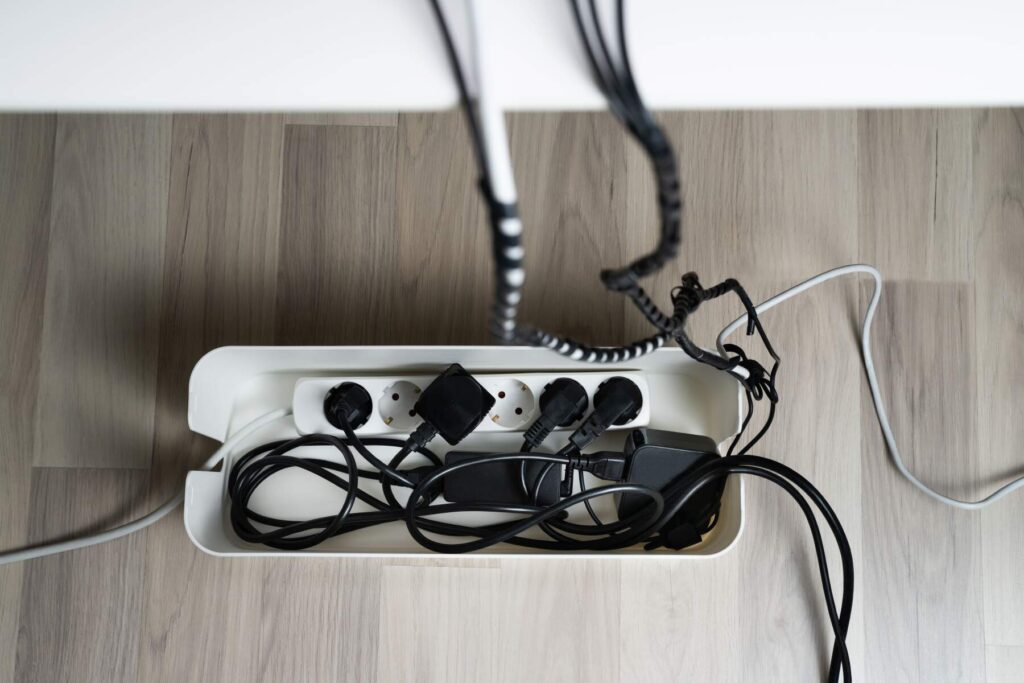
Cable storage boxes are becoming increasingly popular as a practical and stylish solution for hiding cords and cables.
These boxes are designed to support power strips and neatly conceal excess wires.
Here’s how to use a cable box to hide TV wires:
1. Choose a suitable cable box: Select a cable storage box that matches your living room’s style and dimensions. Consider opting for a neutral-colored box that seamlessly blends with your decor.
2. Place the cable box: Position the cable box near the power outlet and cable jack, ensuring easy access for cord management.
3. Organize the cords: Bundle the TV cords together and place them inside the cable box. To keep the wires organized and in place, use cable ties or clips.
4. Position the cable box: Once the cords are neatly stored inside the cable box, position the box on the floor or on a shelf near the TV stand to keep the cords out of view.
5. Bundle Cords
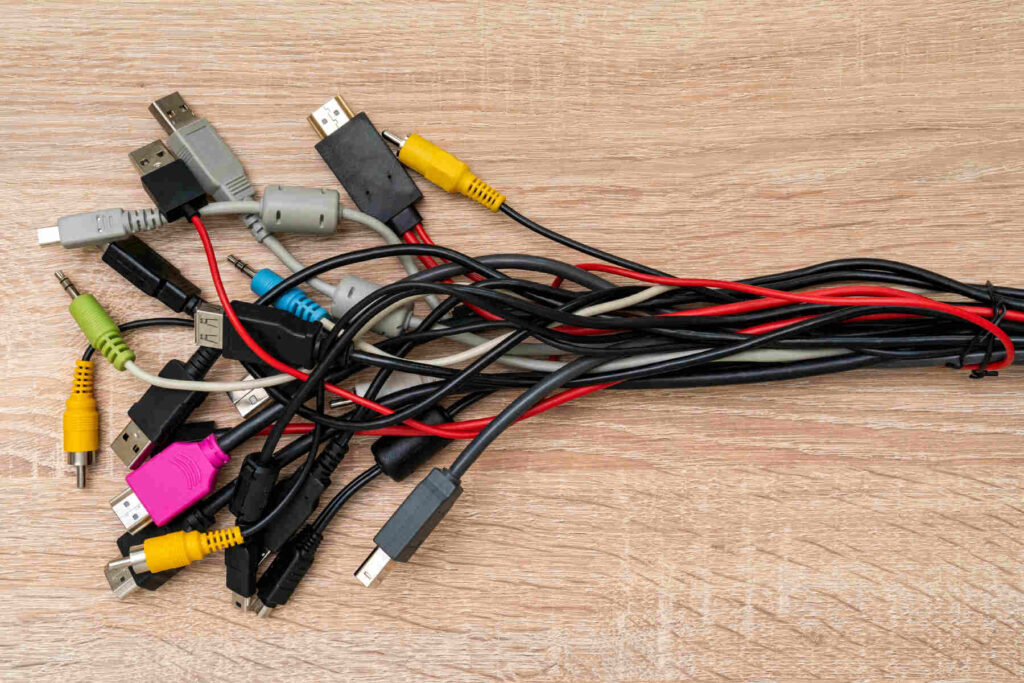
If you’re on a budget or prefer a simple solution, bundling TV cords together can help reduce the visual chaos caused by dangling wires. Here’s how to bundle cords effectively:
1. Gather the cords: Collect all the TV cords and cables into one place, ensuring they are untangled and organized.
2. Use cable ties or clips: Bundle the cords together using cable ties, adhesive hooks, or clips to keep them in a slim enclosure and prevent them from tangling or hanging loosely.
3. Position the cords: Pin the bundled cords along the baseboard behind the TV or on the back of the furniture where the TV is placed to give your room a clean, clutter-free look.
4. Use Velcro rolls as a cost-effective solution: Cut pieces from a Velcro roll and use them to wrap and securely contain the TV cords. Velcro rolls provide flexibility and can be easily adjusted as needed.
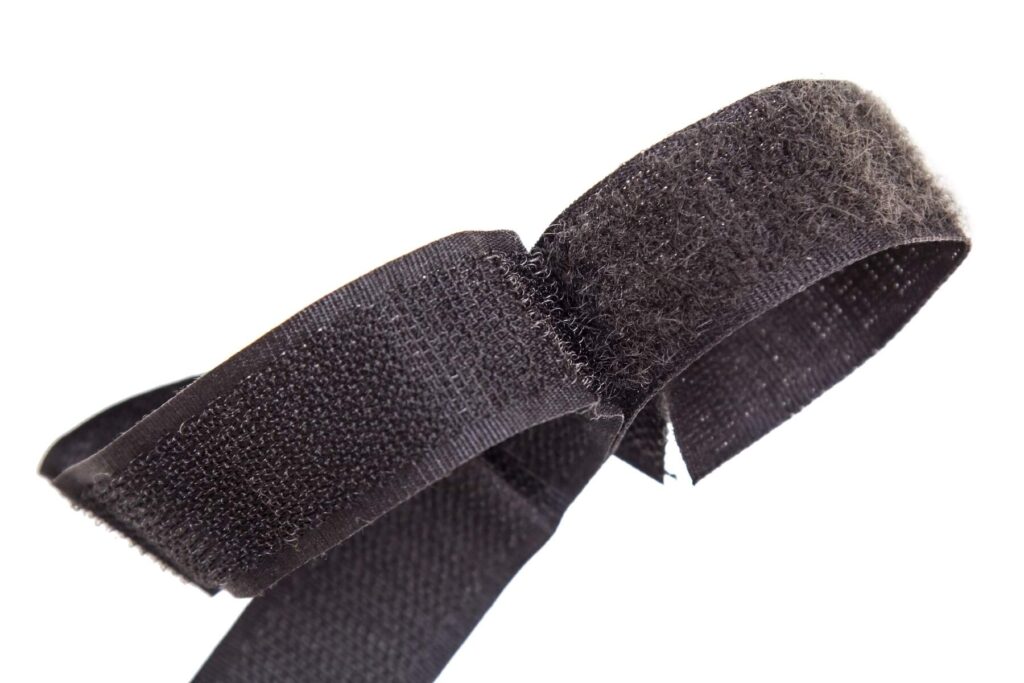
Note: When bundling cords, ensure they are not tightly constricted, as this may affect their performance, restrict signal transmission, or damage them. Leave enough slack to allow for movement and flexibility.
Bonus Tip: Labeling TV Cords

As you embark on your journey to hide TV wires, it’s crucial to label each cord for future reference and convenience.
Here’s why labeling is important:
Identification: Clearly labeling each cord helps identify its purpose and makes it easier to trace and manage in the future.
Moving or mounting: If you decide to move your TV or mount it in a different location, labeling the cords saves time and prevents confusion during the reinstallation process.
Cable provider equipment: Certain cords, like the power cord of a cable box, might be owned by your cable provider. Labeling these cords makes it easier to identify and return them if you switch services.
Take a few minutes to label each cord using adhesive labels or colored tags.
You may even want to take a picture of the back of your TV or cable box to refer to the next time you set up your entertainment center.
By following this simple organization step, you can save a lot of time later.
Conclusion
The purpose of concealing TV wires goes beyond just appearance; it also aims to establish a tidy and well-organized living space.
Whether you choose to hide wires within the wall, use a cable raceway, select a TV stand with an outlet, utilize a cable box, bundle cords together, or a combination of these methods, the goal is to find a solution that fits your needs and complements your decor.
Always prioritize safety and seek advice from professionals when needed.
With these tips and tricks, you can enjoy a seamless, clutter-free viewing experience and showcase your TV as a stylish centerpiece in your home.
Having been an avid Pin saver for years, Linh Huynh transitioned into an emerging Pin maker. With her deep familiarity with Pinterest’s visual wonders, she crafts pins and pens articles, all enriched by her ‘Pin there, done that’ insight—inviting you to click and save. Away from Pinterest, Linh jumps between hobbies, from learning languages to discovering hidden gems in the city.

